As the car swerved into a narrow, unmetalled road leading into the wilderness, a large signboard with a tiger featured on it along the barricaded entrance to the road glared at me, warning me that it was a tiger roaming zone. Another smaller signboard a short distance away repeated the warning along with two messages to the locals of the area – one was not to poison cattle carcasses and the other to report tiger sightings near homes to the forest department. All this existed just around half an hour away from the city centre of Bhopal, the capital city of Madhya Pradesh! It is a city that does, indeed, live with tigers.
However, I was there not for the tigers of Bhopal that day but for the vultures. As an intern with the Bombay Natural History Society (BNHS), this was a golden opportunity for me to see these now rarely sighted birds in unique settings at the Vulture Conservation Breeding Centre in Kerwa, Bhopal. It is a joint venture project by the Madhya Pradesh Forest Department, Van Vihar National Park and Zoo and BNHS to save the highly threatened vulture species from dying out in India.

As the car waited at the entrance to the road, staff from the forest department’s office nearby opened the barricade and let the car in. A short drive through the road led to the gate of the Vulture Conservation Breeding Centre, Bhopal (VCBC-Bhopal). I was extremely excited. I had heard and read about captive conservation breeding for a long time, but this was the first time I was about to witness it on site.

As I entered through the gate, I could see that it was a sprawling campus with scattered buildings surrounded by the wilderness. Although it is not possible to view the vultures directly at their roosting and nesting sites due to health and safety concerns for the birds, you can watch them live in action on CCTV cameras at the main office of the campus.
So, I took a seat in front of the desktop at the office as BNHS research biologist Hemant Bajpai started scrolling the screen to show me the vultures in the centre’s aviaries. It was indeed one of the most intriguing displays I have ever watched.

On camera were scores of beautiful, healthy-looking vultures perched on their roosting and nesting sites in the centre’s aviaries, busy in their routine activities. The staff monitor them remotely on most occasions to maintain minimal human contact as the ultimate aim is to introduce vultures from the conservation centre into the wild. As I watched them fascinated, Dr. Arockianathan Samson, Centre Manager, revealed the history of VCBC-Bhopal.
“The centre was set up in 2014 by the Madhya Pradesh Forest Department, and BNHS was assigned the task of managing the centre. The aim was to save two critically endangered Gyps species, the Indian vulture and the long-billed vulture. The primary objective of conservation work at the centre was to breed in captivity and release in the wild at least 100 pairs of each of the two species within a time span of 15 years,” mentioned Dr. Samson.
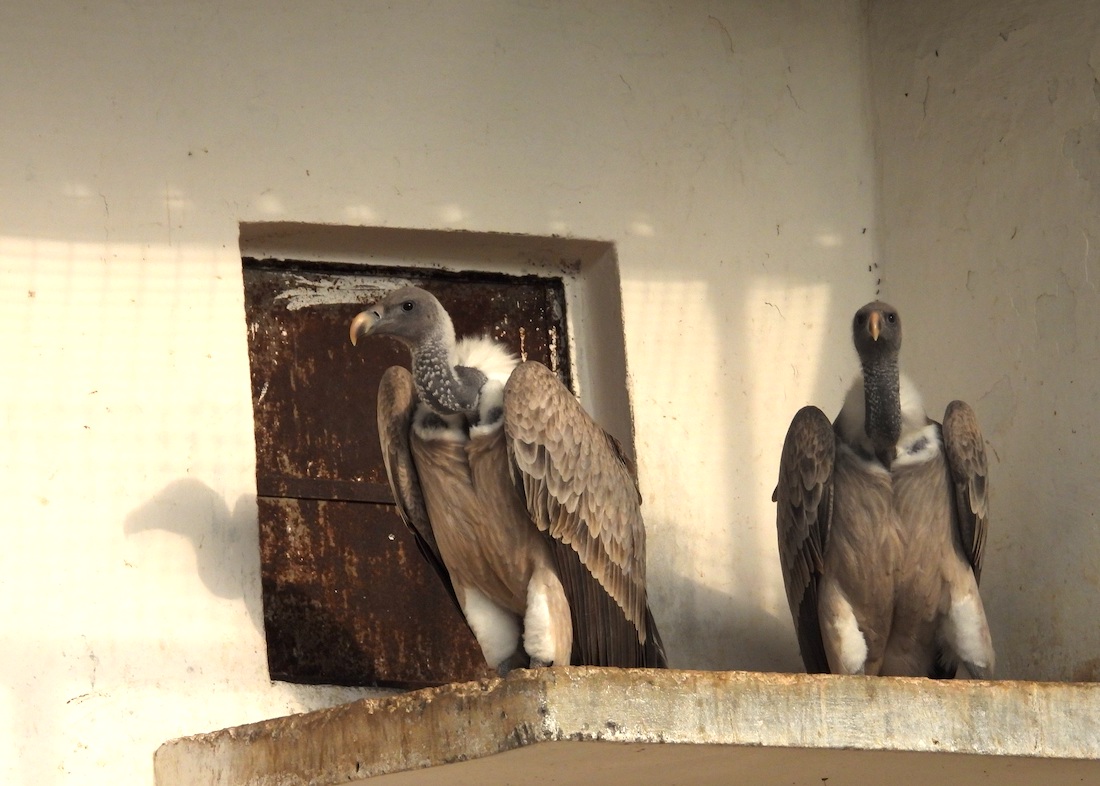
Today, VCBC-Bhopal houses 85 vultures, of which 40 are white-rumped vultures (Gyps bengalensis), and 45 are long-billed or Indian vultures (Gyps indicus). The birds are housed in the colony/breeding aviaries at the centre. The centre also has specialised aviaries like nursery, holding, and hospital aviaries. In the nursery aviary, chicks discarded by parents or those hatched through artificial incubation are kept under intense monitoring and care. The holding aviary is for birds temporarily removed from the colony aviaries for various reasons, such as stopping a fight between two birds. As the name reveals, the hospital aviary is for the medical treatment of sick or injured birds.
VCBC-Bhopal achieved its first significant success when the first successful breeding at the centre led to the birth of a chick in 2017. Since then, although there have been ups and downs, there has been no looking back. With the prenatal and newborn mortality rate of these birds being as high as 70%, more recently, the government invested in developing an artificial incubation facility at the centre. The new effort witnessed its first success this year, with two long-billed vulture chicks being hatched successfully through the artificial incubation technique.
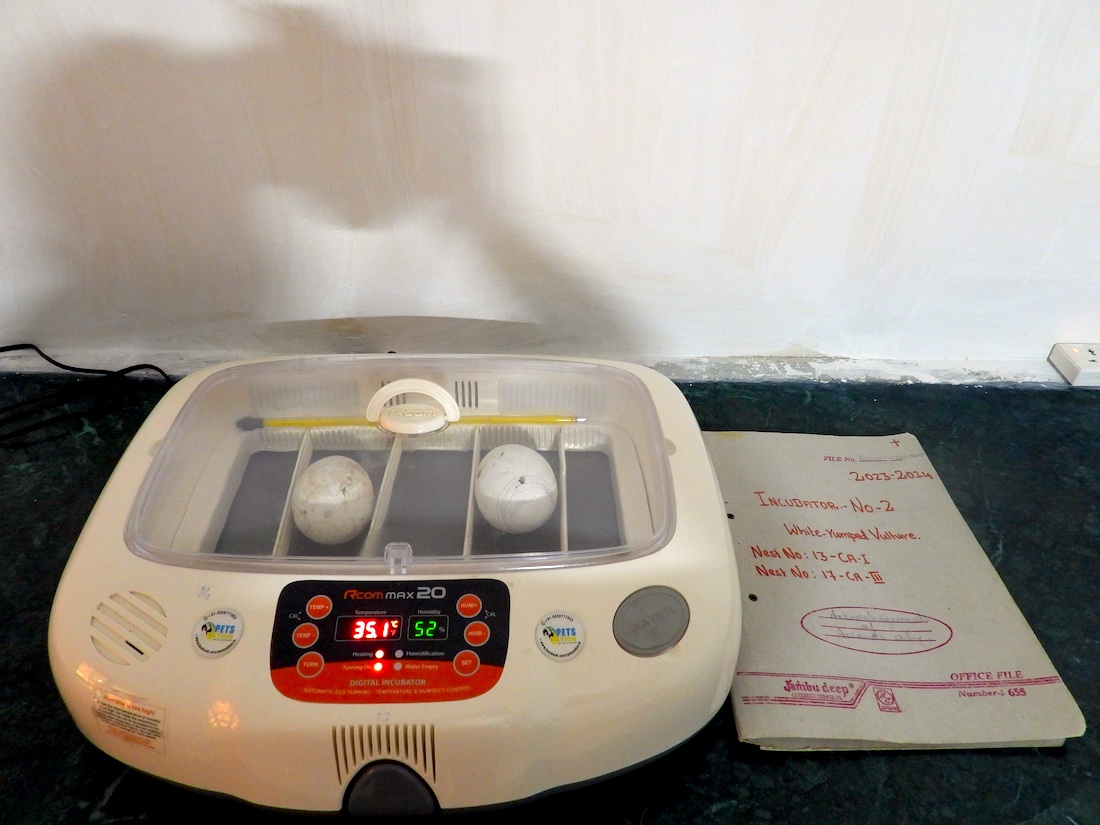
All this incredible work executed at VCBC-Bhopal is ultimately directed at increasing the wild vulture population. The first wild release of the vultures bred at the centre is currently being planned. Once successful, vultures will be released in batches over the coming years. However, simply releasing these birds in the wild does not end the job of the researchers and forest department staff. There is much to do beyond that, as well.
“It is important to ensure that the vultures are released into habitats that are safe for them. Hence, we are working to establish Vulture Safe Zones, which are areas free of threats to vultures like the veterinary use of vulture-toxic NSAIDs,” said Dr. Samson.
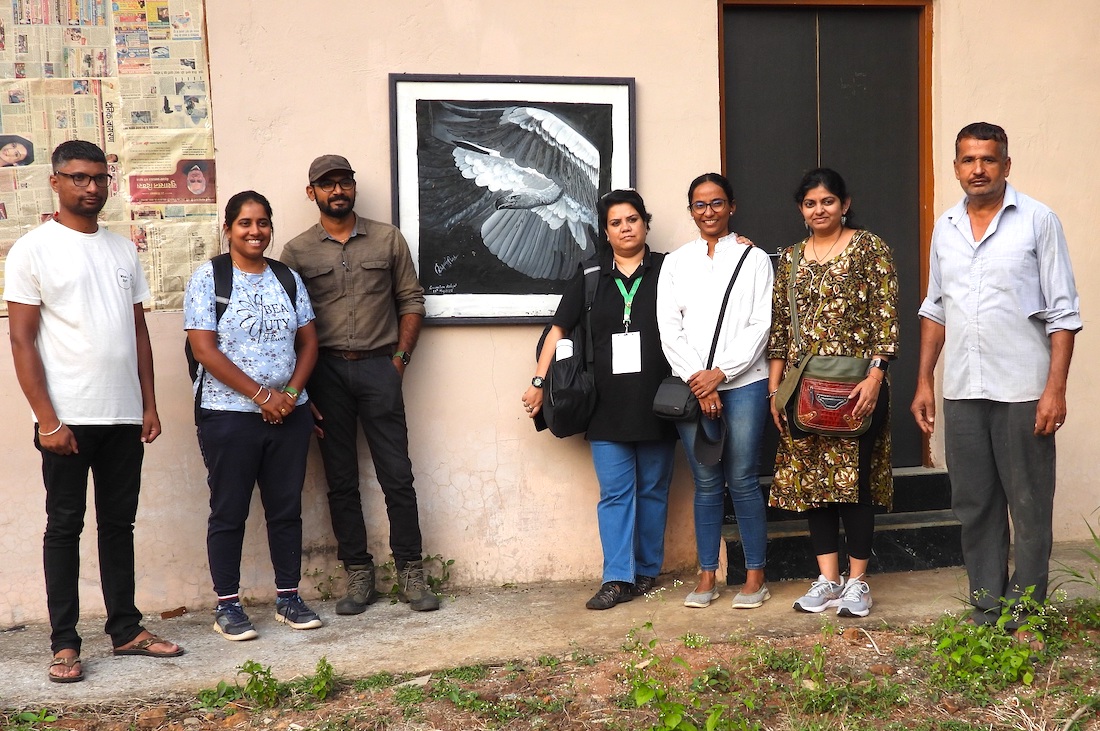
NSAIDs, or non-steroidal anti-inflammatory drugs, are a group of pain-relieving drugs like diclofenac, aceclofenac, ketoprofen, etc., that are highly toxic to vultures. Their wide use in veterinary medicine was the primary reason behind the massive downfall of vulture populations across India a couple of decades back. Vultures feeding on cattle carcasses treated with such drugs died due to their toxic effects that damaged their kidneys. Recognising that vultures might completely vanish from the Indian landscape, the Indian government completely banned the veterinary use of diclofenac in 2006. More recently, two other drugs, aceclofenac and ketoprofen, were also banned from similar use. However, despite these bans, the illegal use of these drugs by livestock breeders to treat the animals continues. In addition to NSAID poisoning, another major threat to vultures is non-targeted poisoning. Farmers in forest fringe areas often poison cattle carcasses deliberately to kill wildlife predating on their livestock, like tigers and leopards. Vultures feeding on such carcasses also suffer.
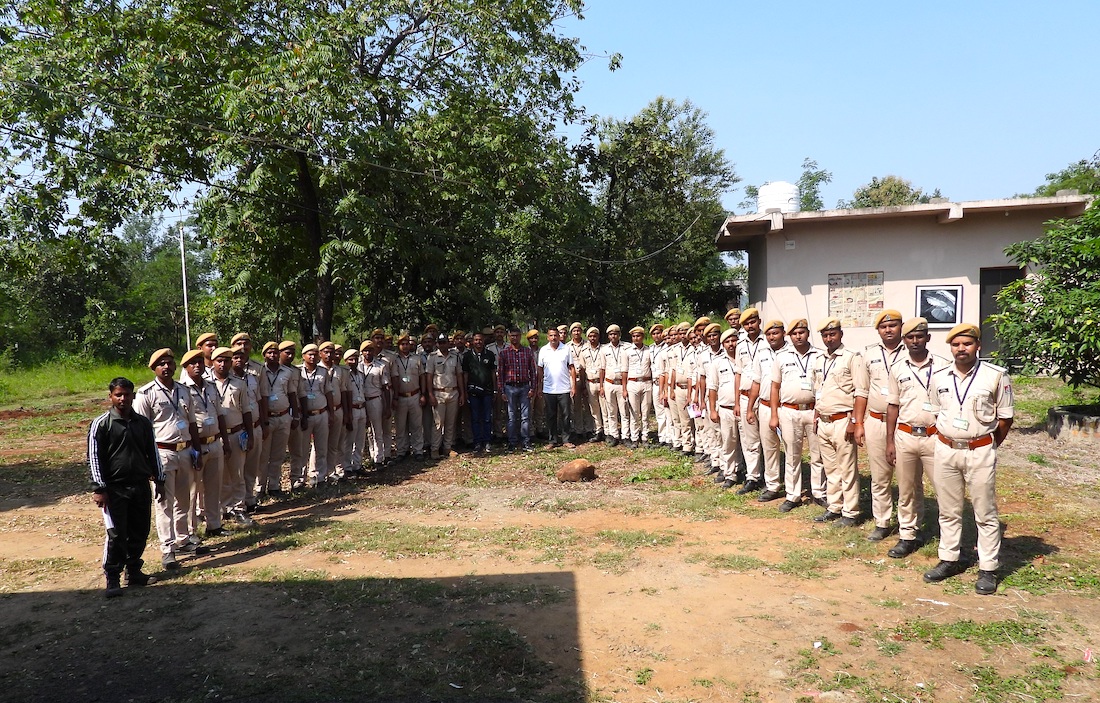
Hence, in addition to managing the vulture breeding program, the VCBC-Bhopal team is busy creating awareness among the various stakeholders involved in vulture conservation to create vulture safe zones. They do so by arranging lectures and competitions involving students, holding meetings with various stakeholders like farmers, animal husbandry officials, and policymakers, and celebrating special days like vulture awareness day by hosting public events, etc.
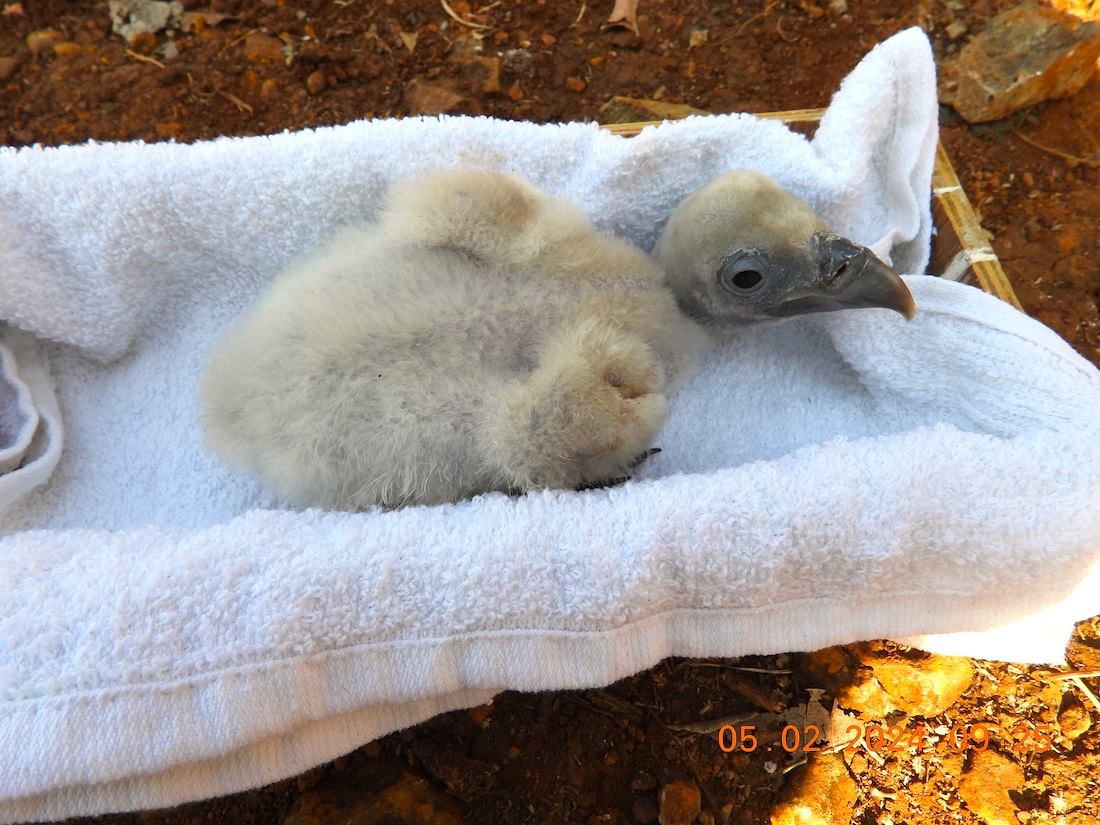
The collective efforts of the VCBC-Bhopal team and vulture conservationists elsewhere have made great strides in the conservation of this fast-disappearing group of birds. Several NSAIDs have been banned from veterinary use. Vulture conservation breeding centres have come up across the country, and vulture safe zones are being established. The work is, however, far from over, as with even a slight error, the slowly recovering vulture population might crash again. Hence, the effort has to be long-term and carefully planned, and it demands united support from all of us to save this ecologically vital group of scavengers to ensure a stable and healthy ecosystem for all of us.

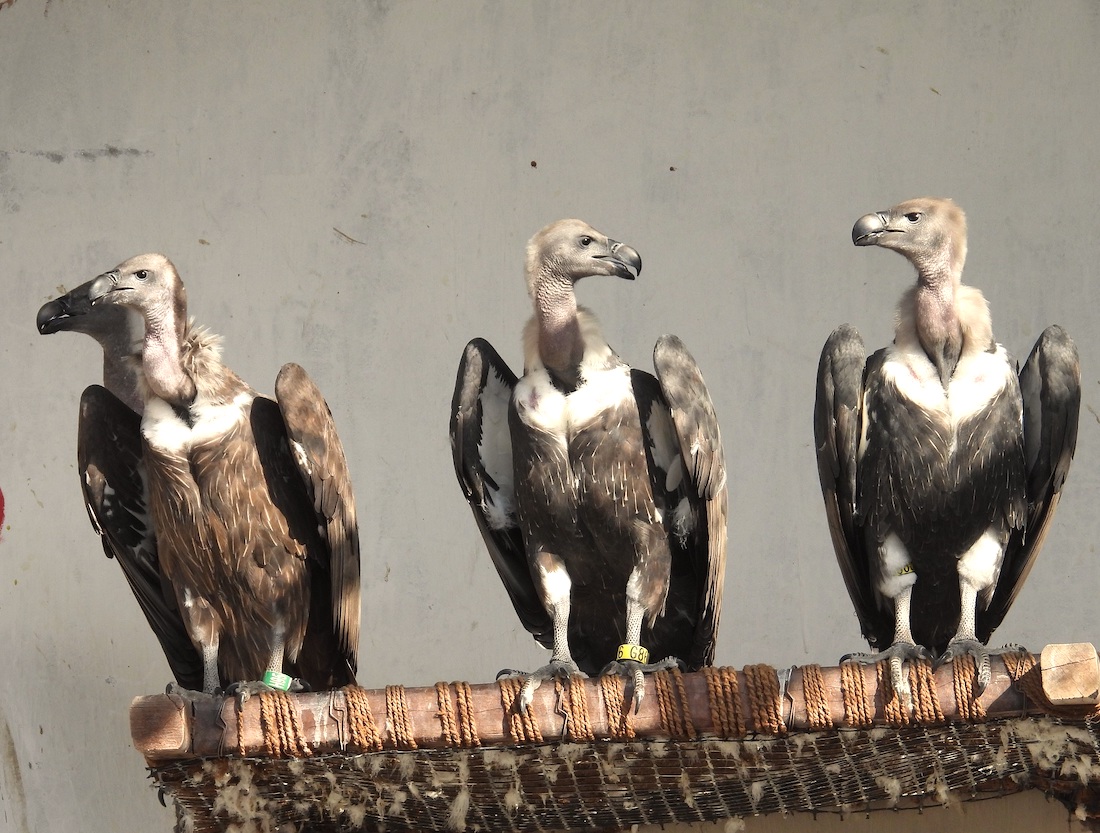
Good work by BNHS. Especially kudos to Dr.Samson
Dr. Samson congratulation Very good work my view you are true Vulture conservator. But now days we need this kind work for vulture distribution areas in entire India. I wish you to successfull vulture conservation.
Conservation of vulture
is very essential for ecosystem. Congratulations entire team and special salute for Dr.Samson